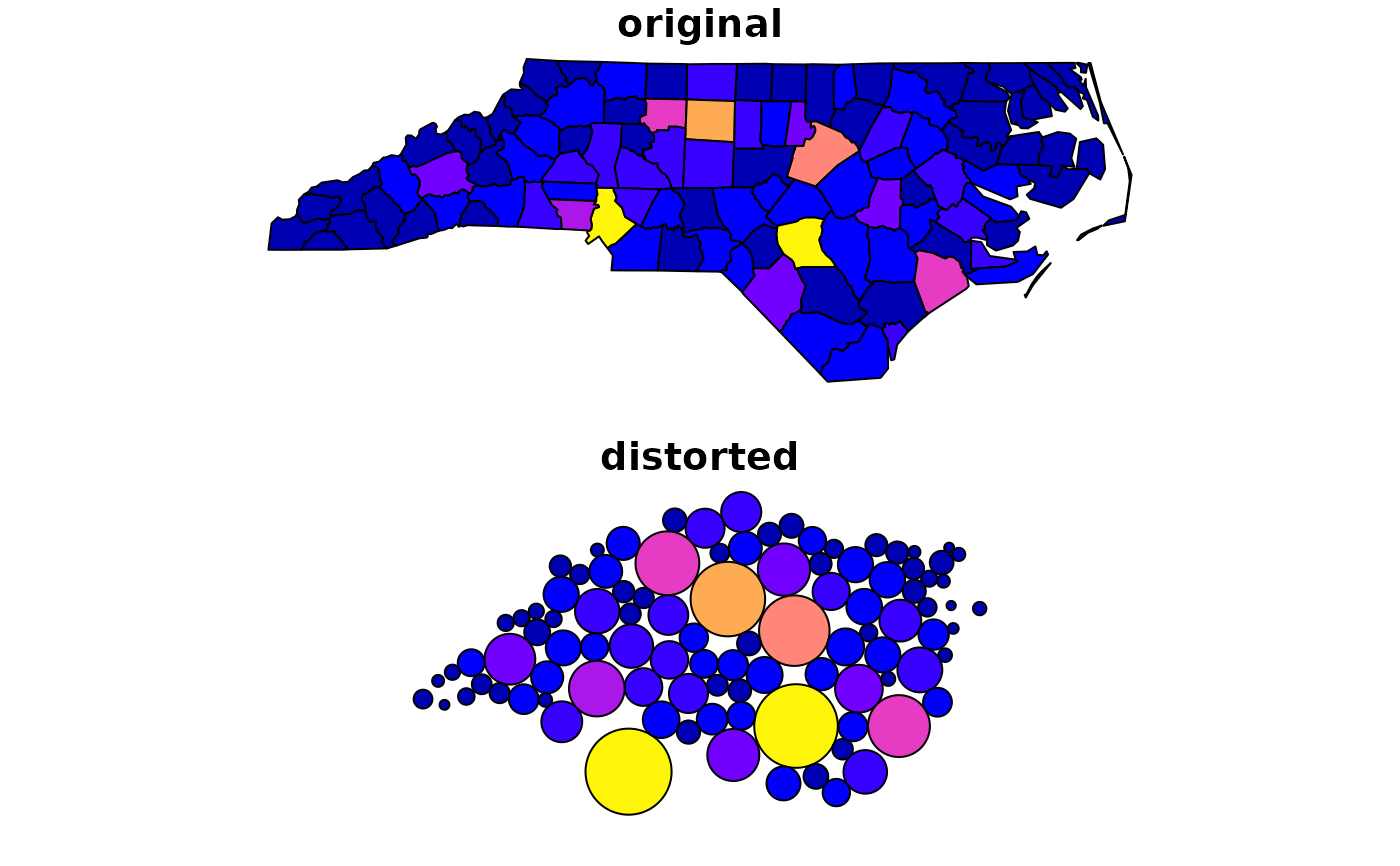Construct a cartogram which represents each geographic region as non-overlapping circles (Dorling 1996).
Usage
cartogram_dorling(x, weight, k = 5, m_weight = 1, itermax = 1000)
# S3 method for class 'sf'
cartogram_dorling(x, weight, k = 5, m_weight = 1, itermax = 1000)
# S3 method for class 'SpatialPolygonsDataFrame'
cartogram_dorling(x, weight, k = 5, m_weight = 1, itermax = 1000)Arguments
- x
a polygon or multiplogyon sf object
- weight
Name of the weighting variable in x
- k
Share of the bounding box of x filled by the larger circle
- m_weight
Circles' movements weights. An optional vector of numeric weights (0 to 1 inclusive) to apply to the distance each circle moves during pair-repulsion. A weight of 0 prevents any movement. A weight of 1 gives the default movement distance. A single value can be supplied for uniform weights. A vector with length less than the number of circles will be silently extended by repeating the final value. Any values outside the range [0, 1] will be clamped to 0 or 1.
- itermax
Maximum iterations for the cartogram transformation.
References
Dorling, D. (1996). Area Cartograms: Their Use and Creation. In Concepts and Techniques in Modern Geography (CATMOG), 59.
Examples
library(sf)
library(cartogram)
nc = st_read(system.file("shape/nc.shp", package="sf"), quiet = TRUE)
# transform to NAD83 / UTM zone 16N
nc_utm <- st_transform(nc, 26916)
# Create cartogram
nc_utm_carto <- cartogram_dorling(nc_utm, weight = "BIR74")
# Plot
par(mfrow = c(2,1))
plot(nc[,"BIR74"], main="original", key.pos = NULL, reset = FALSE)
plot(nc_utm_carto[, "BIR74"], main="distorted", key.pos = NULL, reset = FALSE)
